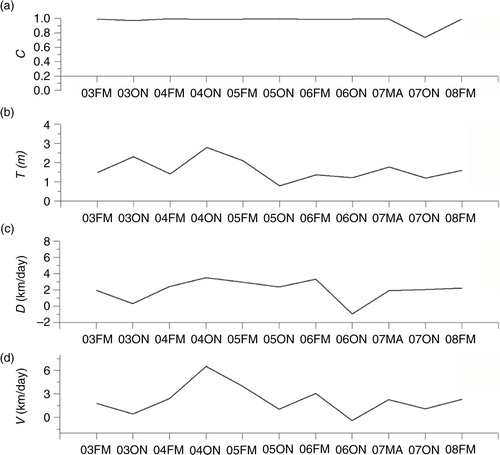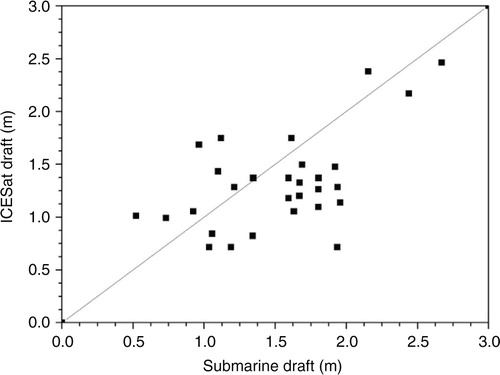Figures & data
Fig. 1 Geographic location of the Laptev Sea, modified from Krumpen et al. (Citation2013). The NB and EB used to calculate volume flux are marked as solid black lines. The fast ice edge is indicated as a dashed line. On average, five polynyas are formed between pack ice and fast ice edge, including the New Siberian polynya (NS), the western New Siberian polynya (WNS), the Anabar–Lena polynya (AL), the Taymyr polynya (T) and the Northern Taymyr polynya (NET).
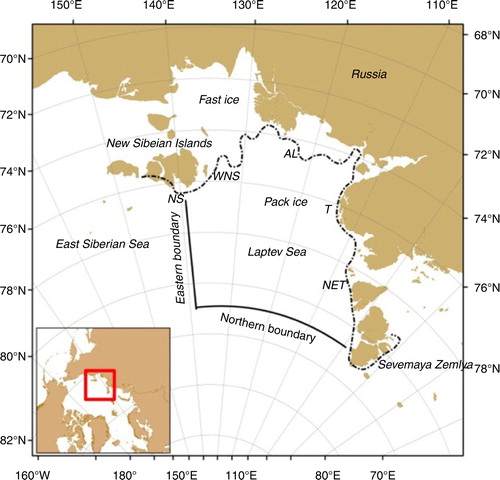
Table 1 Selected values and their uncertainties of input variables used in converting ICESat freeboard to thickness for both periods. See the explanation in the text for how the values were obtained.
Fig. 3 Spatial distribution maps of estimated uncertainty for sea-ice thickness for the (a) 07FM and (b) 07ON campaign.
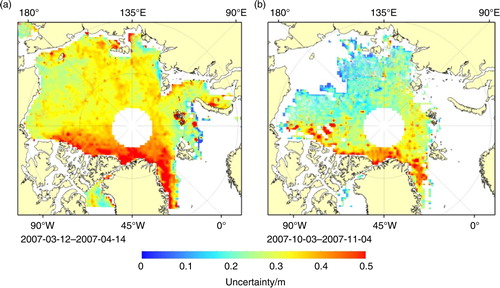
Fig. 4 Representative spatial distribution patterns of ice-drift vectors superimposed on the thickness estimates (blue to red) retrieved from the ICESat measurements. The maps represent the (a) winter and (b) autumn campaigns in 2003. The maps for the 2004–08 period are shown in Supplementary Fig. S2. The red lines represent the location of the two boundaries as indicated in .
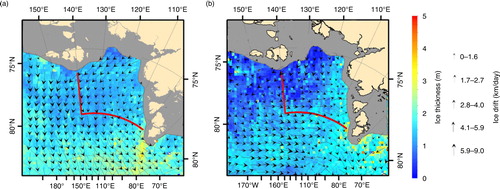
Fig. 5 Ice-drift rate averaged over the Laptev Sea. D
m
(in black) and D
z
(in red) represent the mean meridional and zonal ice-drift rates, respectively. D
v
(in blue) equals to denoting the drift magnitude. The vertical dashed lines are plotted for an easy discrimination drift rates of between autumn (blue) and winter (green) ICESat campaigns. A horizontal black dash line across zero is also given for a clear visual identification of the sign of a drift. A positive (or negative) meridional or zonal value defines a northward (or southward) transport or a westward (or eastward) transport. In other words, a positive (or negative) value indicates that ice is exported out of (or imported into) the Laptev Sea.
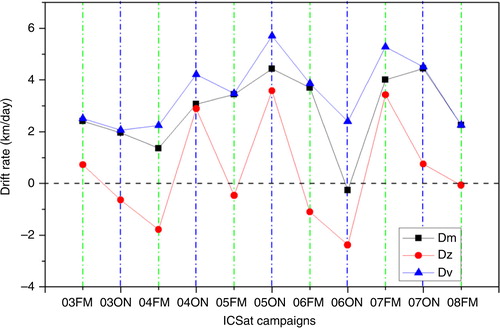
Fig. 6 Time series of sea-ice volume flux estimates through the EB (v z , orange) and NB (v m , dark green) boundaries. Blue points denote the total flux (i.e., v z +v m ) with error bars showing the uncertainty calculated with Eqn. 8.
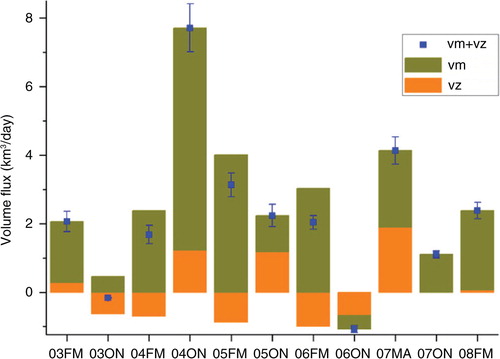
Table 2 Statistics of total volume flux and uncertainty as well as those of the zonal and meridional components across the EB and NB over the investigated period.
Fig. 7 Comparison between ice volume flux estimates through the Laptev Sea and Fram Strait. The Fram Strait outflow was obtained from Spreen et al. (Citation2009).
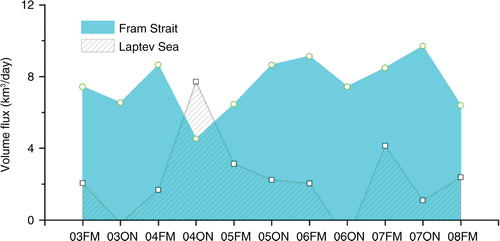
Fig. 8 Time series of volume flux estimates at the NB along with a time series of values of parameters used to obtain the volume flux estimates. This figure represents the variability of sea-ice concentration (c), ice thickness (T), ice-drift rate (D) and ice volume flux (V) over the NB boundary.
